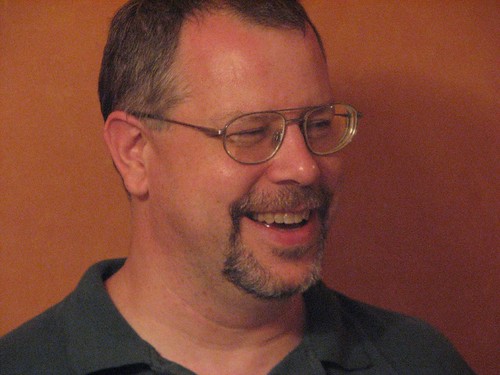Convergence
Stacy asked me via email: A word I'm seeing a lot of lately is "convergence." What exactly is meant by that in reference to the church?
She was referring to Robert Webber's book, The Younger Evangelicals, chart of differences between the moderns (traditional and pragmatic evangelicals) and the postmodern (the younger evangelicals). Specifically in worship, it says Traditional Evangelicals (1950-1975) like Traditional worship, Pragmatic Evangelicals (1975-2000) like Contemporary, and Younger Evangelicals (2000- ) like Convergence. What does that mean?
Answer: I don't know.
Dictionary Definition: Convergence - The act, quality, state, or fact of converging. Helpful. :(
Dictionary Definition: Converge - To move toward union or toward a common conclusion or result.
A google search (meaning sources aren't very well known to me) gave me:
Convergence Movement, which says:
the Convergence Movement (also referred to in the remainder of this article as "CM") seeks to blend or merge the essential elements in the Christian faith represented historically in three major streams of thought and practice: the Charismatic, Evangelical/Reformed and Liturgical/Sacramental. An increasing number of local congregations and leaders from many backgrounds are finding "treasures old and new" in the spiritual heritage of the church universal. The site then breaks down the three areas if you are wondering what elements are in each.
It goes on to say, Greater public awareness of the new movement came through Stan White, a young fourth generation Assembly of God pastor from Valdosta, Georgia, who caused a major stir when he took his entire independent Charismatic congregation into the Episcopal Church. The story was written up in Christianity Today in September of 1990 entitled "Why the Bishops Went to Valdosta" and Charisma Magazine, the major voice for the Charismatic movement, followed in April of 1991 with a similar article on White's remarkable journey toward a church that was fully Charismatic, fully Evangelical, and fully Liturgical and Sacramental.
It then list six COMMON ELEMENTS OF CONVERGENCE CHURCHES:
1. A restored commitment to the sacraments, especially The Lord's Table.
2. An increased appetite to know more about the early church.
3. A love and embrace for the whole church, and a desire to see the church as one.
4. The blending in the practices of all three streams is evident, yet each church approaches convergence from different bases of emphasis.
5. An interest in integrating more structure with spontaneity in worship.
5. A greater involvement of sign and symbol in worship through banners, crosses, Christian art and clerical vestments.
6. A continuing commitment to personal salvation, Biblical teaching, and to the work and ministry of the Holy Spirit.
Also Google turned up:
Netnews: It quotes Webber, who wrote the book in question: Webber said what he sees happening now in the churches is "a return to basics, the convergence of traditions, and an integration of all ministries of the church with worship." A renewal of interest in the Christian year, in which Advent, Christmas, Epiphany, Lent and other observances mark the passage of time, can be good for the church, Webber said.
Biblical Recorder Worth a look at what has caused Postmodernism.
The CEEC takes the word back to Leslie Newbigin:
Newbigin goes on to make a startling statement for his time; that is, that the one Church of Jesus Christ, which has been so fractured by human sin and political/cultural circumstance through history, is by its nature threefold in the spiritual essence of its historical and existential makeup. This threefold nature he describes as being Catholic, Protestant, and Orthodox/Pentecostal or charismatic. In describing this threefold reality, he goes on to remark that these three streams represent emphases that are all necessary for the wholeness and fullness of the Church on earth as God has decreed it in Christ and revealed it in the apostolic tradition of Holy Scripture. The Catholic he relates to the emphases of "incarnation and creation"; the Protestant to "biblical proclamation and conversion"; and the Orthodox/Pentecostal to "the mystical and the Spirit".
Conclusion: I'm fairly sure this is what was meant by convergence in the chart. But as for the EasumBandy Convergence Conference, I'm not sure if they are referencing Webber's term or if they just mean all of their staff (which is spread out all over North America) converging together.
My thoughts, which I documented a bit as I read the Word and Power Church, are that this Convergence of three streams can't be confused with just a blending. It isn't. You can't do (as one of the Google articles inferred) just do a blended worship and think you understand what is happening. As the three streams mix, something new is created. I think The Crossover is experiencing this even now.
Sorry for the long post.
Friday, November 22, 2002
Subscribe to:
Post Comments (Atom)

No comments:
Post a Comment